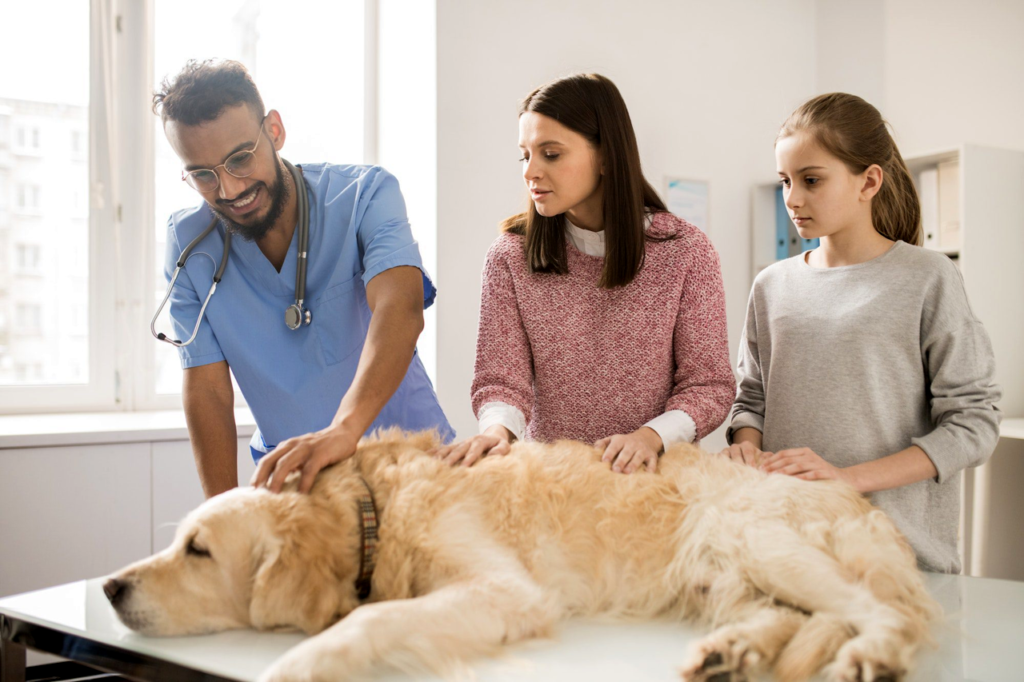
Average Cost of Owning a Dog per year in UK
Owning a dog is undoubtedly one of life’s greatest joys. The companionship, loyalty, and unconditional love that a furry friend brings into your home are unparalleled. However, the decision to become a dog owner comes with a set of responsibilities, both emotional and financial. In this article, we will delve into the various aspects of the average cost of owning a dog per year in the UK, shedding light on the essential factors that contribute to this financial commitment.
Read More: Benefits of Pet Ownership for Children
Owning a Dog per year in UK

Overview of Dog Ownership
Welcoming a dog into your family is a heartwarming experience, but it’s not all cuddles and playtime. Understanding the responsibilities, especially the financial ones, is crucial for providing the best care for your new companion.
Importance of Understanding Costs
Many prospective dog owners are surprised by the financial commitment that comes with having a furry friend. Knowing the average costs helps individuals plan their budget effectively, ensuring that their pet receives the care it deserves.
Initial Expenses
Purchase or Adoption Fees
The journey begins with the initial decision to bring a dog into your life. Whether you choose to adopt from a shelter or purchase from a breeder, there are associated costs that vary depending on the source.
Essential Supplies and Equipment
Setting up your home for a new pet involves investing in essential supplies such as a comfortable bed, food bowls, leashes, and toys. These initial expenses are critical for providing a welcoming and comfortable environment for your new furry family member.
Recurring Costs
Veterinary Care
Routine veterinary care is a non-negotiable aspect of responsible pet ownership. From vaccinations to regular check-ups, veterinary costs can accumulate. Additionally, unforeseen health issues may arise, adding to the overall cost of veterinary medicine.
Food and Treats
Ensuring your dog receives a balanced and nutritious diet is essential for their health and well-being. High-quality dog food, along with occasional treats, contributes to the recurring costs of dog ownership.
Grooming and Hygiene
Maintaining your dog’s grooming and hygiene is not just about aesthetics; it’s also crucial for their health. Regular grooming sessions, whether done at home or by professionals, incur additional costs.
Training and Behavioral Classes
Investing in training classes and addressing behavioral issues early on is an investment in a harmonious relationship with your pet. While it may involve additional costs, the long-term benefits are invaluable.
Unforeseen Costs
Emergencies and Unexpected Medical Expenses
Despite the best care, emergencies and unexpected health issues can arise. Being prepared for unforeseen medical expenses is part of responsible pet ownership.
Repairs and Replacements
Dogs, especially puppies, may be prone to chewing and damaging belongings. Budgeting for occasional repairs or replacements of damaged items is essential.
Cost of Pet Insurance

Importance of Pet Insurance
Pet insurance is a valuable safety net that can help mitigate unexpected veterinary costs. Discussing the importance of pet insurance with a reliable provider is a proactive step for responsible dog owners.
Factors Influencing Insurance Costs
Various factors, including the breed, age, and coverage level, influence the cost of pet insurance. Understanding these factors can help individuals make informed decisions about their pet’s coverage.
Factors Influencing Overall Cost
Dog Breed and Size
Different dog breeds and sizes have varying needs and associated costs. Larger breeds, for instance, may have higher food and medical expenses.
Geographic Location
The cost of living and the availability of pet services can vary significantly by geographic location. Urban areas may have higher costs than rural areas, influencing the overall cost of dog ownership.
Lifestyle and Activities
The lifestyle and activities you share with your dog also impact costs. More active lifestyles may require additional expenses for toys, equipment, and potential healthcare needs.
Tips for Cost-Effective Dog Ownership
DIY Grooming and Basic Training
Taking on some grooming tasks and basic training at home can contribute to cost savings. Many resources and online tutorials are available to guide pet owners.
Seeking Discounts and Promotions
Being savvy about discounts on supplies, services, and insurance can significantly reduce the overall cost of dog ownership.
Maintaining a Healthy Lifestyle
Preventing health issues through regular exercise and a balanced diet is not only beneficial for your dog’s well-being but also for your wallet. A healthy dog is less likely to incur extensive medical expenses.
Balancing Cost and Care

Ensuring Quality Care within a Budget
Balancing cost-effectiveness with providing quality care is a challenge for many dog owners. Finding the right balance ensures that your pet receives the care they need without breaking the bank.
The Long-Term Commitment
Owning a dog is a long-term commitment that goes beyond financial considerations. The joy, companionship, and love that dogs bring into our lives make the investment worthwhile.
Conclusion
Summarizing Key Points
Understanding the average cost of owning a dog per year in the UK involves considering various factors, from initial expenses to recurring and unforeseen costs.
Emphasizing the Rewarding Aspects
While the financial commitment is significant, the joy, loyalty, and companionship that dogs provide make it a fulfilling and rewarding experience. The benefits far outweigh the costs.
Read More: How to Keep Pets Safe During this Winter?
FAQs
- Is pet insurance necessary for every dog owner? Pet insurance is highly recommended, as it can provide financial assistance in unexpected medical situations.
- How can I reduce grooming costs for my dog? DIY grooming at home and utilizing grooming promotions can help reduce grooming expenses.
- Are there specific breeds that are more cost-effective to own? Generally, smaller breeds may have lower associated costs compared to larger breeds.
- What factors influence the geographic variation in dog ownership costs? Cost of living, availability of pet services, and regional veterinary costs contribute to geographic variations.
- Is it possible to estimate the long-term costs of owning a dog? While exact costs may vary, estimating potential expenses can help prospective dog owners plan more effectively.








One Comment